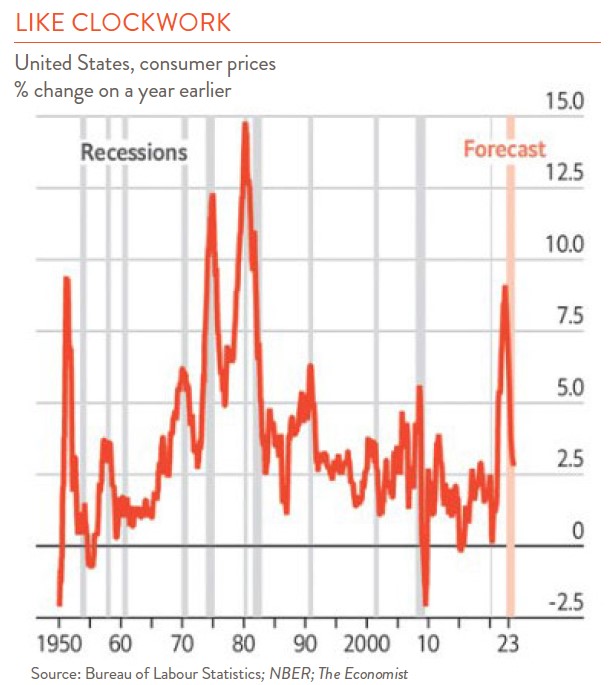These words are from Jerome Powell, Chair of the Federal Reserve, whose dual charge is maintaining financial stability (code for low inflation) while also ensuring full employment. It’s a difficult and often impossible balancing act.
As you can see from the chart below, inflation has not been cooperating with the Fed recently. It has risen quite rapidly after slumbering for years between two and three percent. Massive Covid stimulus combined with ultra-low interest rates have been like gasoline on a fire for prices. The Consumer Price Index (CPI) has cooled a bit recently, to 5%-6% from 8%, but it is still well above the Fed’s objective.

The Fed has gone on record as saying it needs to get inflation back to pre-Covid levels to achieve financial stability. The running joke among economists is, if you give them a date, don’t give them a number. And if you give them a number, don’t give them a date. The Fed is being awfully exact today in its inflation objective.
And where did this 2% inflation number come from in the first place? There is no gospel that says you need a 2% inflation number for financial stability. It probably comes from the fact that inflation was at 2% for many years pre-Covid. Past Fed chairs have been very reticent about ever voicing an inflation target. Paul Volcker was victorious in vanquishing inflation in the 1980s, but when he left office in 1987, the CPI was still at 4%. Alan Greenspan never gave a precise inflation target number. His statements were so opaque that he once joked, “If I seem unduly clear to you, you must have misunderstood what I said.”
Janet Yellen, the current Treasury Secretary and previous Fed Chair, did issue inflation targets, and Jerome Powell has continued this policy. In fairness to Mr. Powell, he has been “Greenspan nuanced” in his statements, saying he wants to get inflation back to 2% “on average” and “over time.”
So, what is the right inflation number to shoot for? We really don’t know. We do know that if the Fed pushes up interest rates too fast to reduce inflation it risks a possible recession. Some pundits have noted that every time inflation gets above 5%, we end up in recession. So, we may be headed there now. This would not be good for stocks, but there is a silver lining. The lower stock prices go, the cheaper valuations get, and the higher future returns will be. Let’s hope for financial stability now, but don’t assume a 2% inflation rate is required to get there.